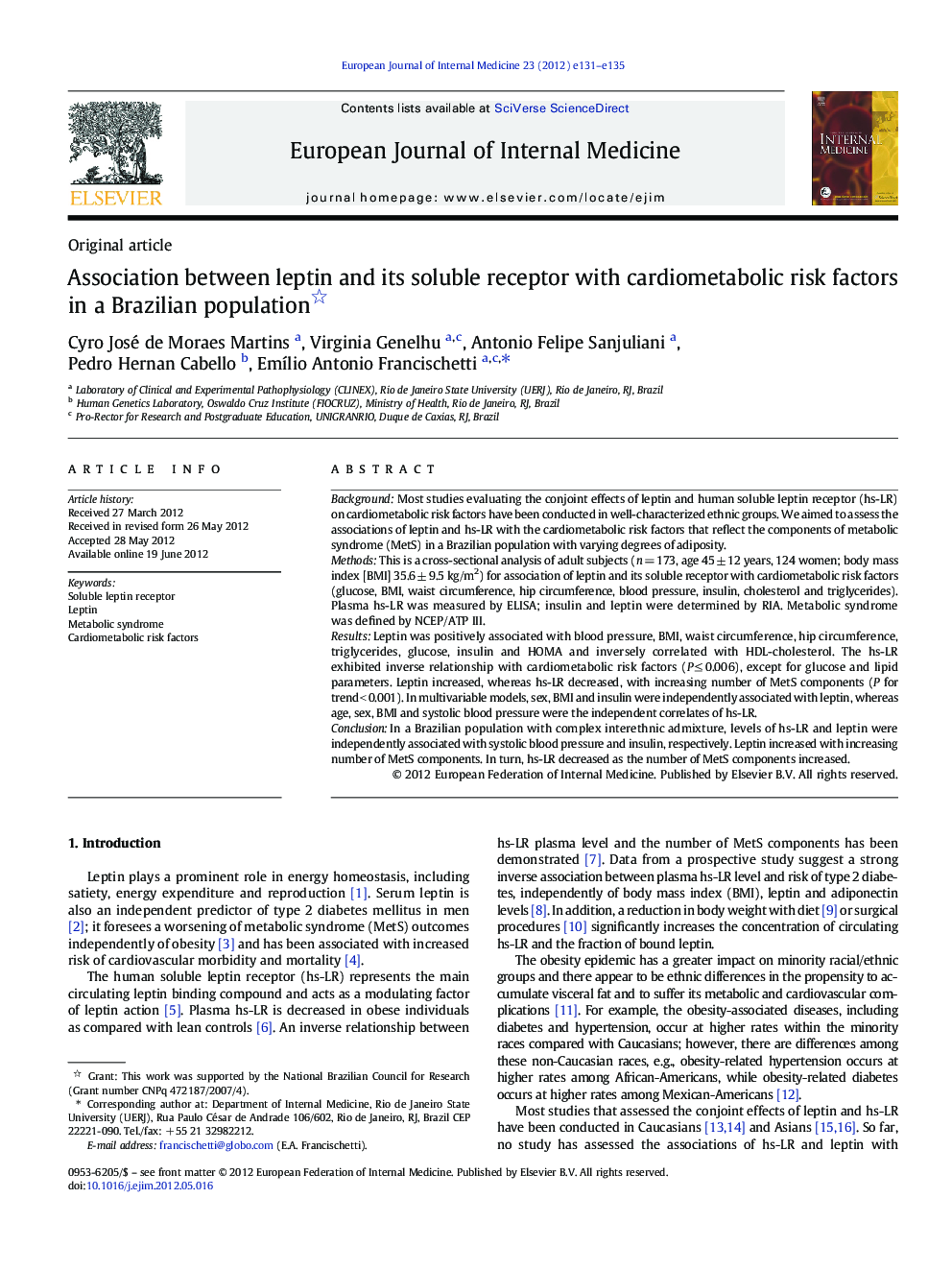| Article ID | Journal | Published Year | Pages | File Type |
|---|---|---|---|---|
| 3467521 | European Journal of Internal Medicine | 2012 | 5 Pages |
BackgroundMost studies evaluating the conjoint effects of leptin and human soluble leptin receptor (hs-LR) on cardiometabolic risk factors have been conducted in well-characterized ethnic groups. We aimed to assess the associations of leptin and hs-LR with the cardiometabolic risk factors that reflect the components of metabolic syndrome (MetS) in a Brazilian population with varying degrees of adiposity.MethodsThis is a cross-sectional analysis of adult subjects (n = 173, age 45 ± 12 years, 124 women; body mass index [BMI] 35.6 ± 9.5 kg/m2) for association of leptin and its soluble receptor with cardiometabolic risk factors (glucose, BMI, waist circumference, hip circumference, blood pressure, insulin, cholesterol and triglycerides). Plasma hs-LR was measured by ELISA; insulin and leptin were determined by RIA. Metabolic syndrome was defined by NCEP/ATP III.ResultsLeptin was positively associated with blood pressure, BMI, waist circumference, hip circumference, triglycerides, glucose, insulin and HOMA and inversely correlated with HDL-cholesterol. The hs-LR exhibited inverse relationship with cardiometabolic risk factors (P ≤ 0.006), except for glucose and lipid parameters. Leptin increased, whereas hs-LR decreased, with increasing number of MetS components (P for trend < 0.001). In multivariable models, sex, BMI and insulin were independently associated with leptin, whereas age, sex, BMI and systolic blood pressure were the independent correlates of hs-LR.ConclusionIn a Brazilian population with complex interethnic admixture, levels of hs-LR and leptin were independently associated with systolic blood pressure and insulin, respectively. Leptin increased with increasing number of MetS components. In turn, hs-LR decreased as the number of MetS components increased.
